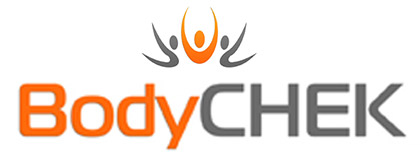In my last blog, I sheepishly admitted to having a right knee and a left shoulder injury.
After resting and icing, taking more care with my posture when relaxing at home and my ergonomics whilst working at home and reluctantly pulling out of a tennis tournament, the pain has subsided greatly.
The knee has no pain at all and the shoulder is about a 1 out of 10, when it was a 9 out of 10.
Yesterday, I only had a 20 minute window for a workout, so here’s what I did:
Stretches:
- Pec Minor
- latissimus dorsi
- hamstrings
- calves
Strengthening Exercises:
- Touch Toe Drill
-
- Tempo: Slow & controlled
- Reps: 3 times around each side
- Sets: 2
- Static Lunge with back leg on Ball
-
- Tempo: 2 seconds down, 2 second up
- Reps: 12 on each leg
- Sets 2
- 3 Point Alphabet:
-
- Tempo: Slow
- Reps: Writing the letters of the alphabet with one arm (26 reps each side)
- Sets: 2
Touch Toe Drill:
The Technique:
- Standing on one leg, imagine you’re in the centre of a clock-face
- Ensuring that you keep the heel of your standing leg on the floor
- Put a stick across your back (see picture)
- Keep your torso upright with spine in neutral alignment
- Draw your naval inwards towards the spine
- Reach as far as you can with your free leg towards each number on the clock one at a time
- Allow the knee of the standing leg to bend (like doing a single-leg squat)
- Keep all your weight on your standing leg and don’t put any weight onto the free leg.
- Ensure you keep your knee tracking over your second toe of the standing leg
- Do not allow the knee to move inwards towards the centre of the body
- Keep the torso upright and avoid any side to side hip movement
The Benefits:
- Strengthens the hip muscles which help to stabilise the knee
- Strengthens the muscles that control the leg in all 3 planes of motion
- Helps to prevent knee injury
- Improves balance
Static Lunge with back leg on ball:
The Technique:
- Stand with one leg forward and the back leg on a Swiss Ball (as above left)
- Keep the torso upright and spine straight
- Draw your naval inwards towards the spine
- Drop the bodyweight down, allowing the back knee to bend
- Ensure you keep your front knee tracking over the second toe
- Do not allow the knee to move inwards towards the centre of the body
- Keep the torso upright and avoid any side to side hip movement
- Push through the heel of the front foot to return back to the start position
The Benefits:
- Strengthens the gluteals, hamstrings and quadriceps
- Strengthens the hip muscles which help to stabilise the knee
- Strengthens the muscles that control the leg in all 3 planes of motion
- Helps to prevent knee injury
- Improves balance
3 Point Alphabet:
- Kneel on a bench with your hips directy over your knees
- Keep the torso horizontal and spine straight
- Put both hands on the ball (4 Point)
- Use a stick to help you get your spine in neutral (your hand should fit snug under the stick in the small of your back)
- Tuck your chin in and look straight down
- Draw your naval inwards towards the spine
- Take one hand off and place on your hip
- With the hand still on the ball, slowly start writing the alphabet with the ball, keeping the rest of the body completely still
- Then switch to the other arm and repeat.
The Benefits:
- Strengthens the shoulder in a safe position
- Builds stability around the shoulder
- Engages survival reflexes, therefore will help lazy muscles to work
- Incorporates deep abdominal muscle activation with shoulder stabilization
- Reduces likelihood of future shoulder injury.
I’ll keep you posted on my progress!
